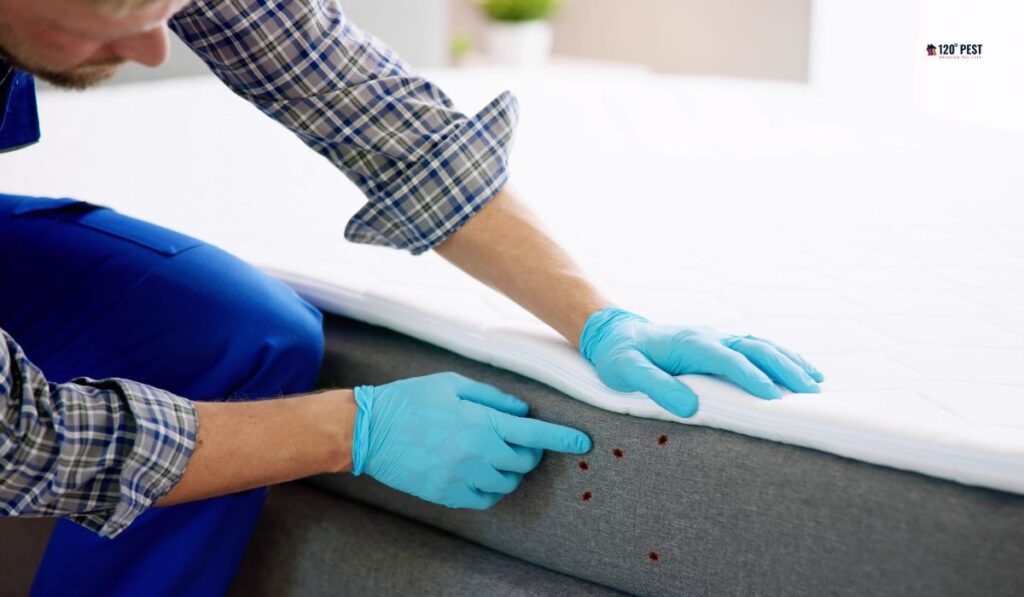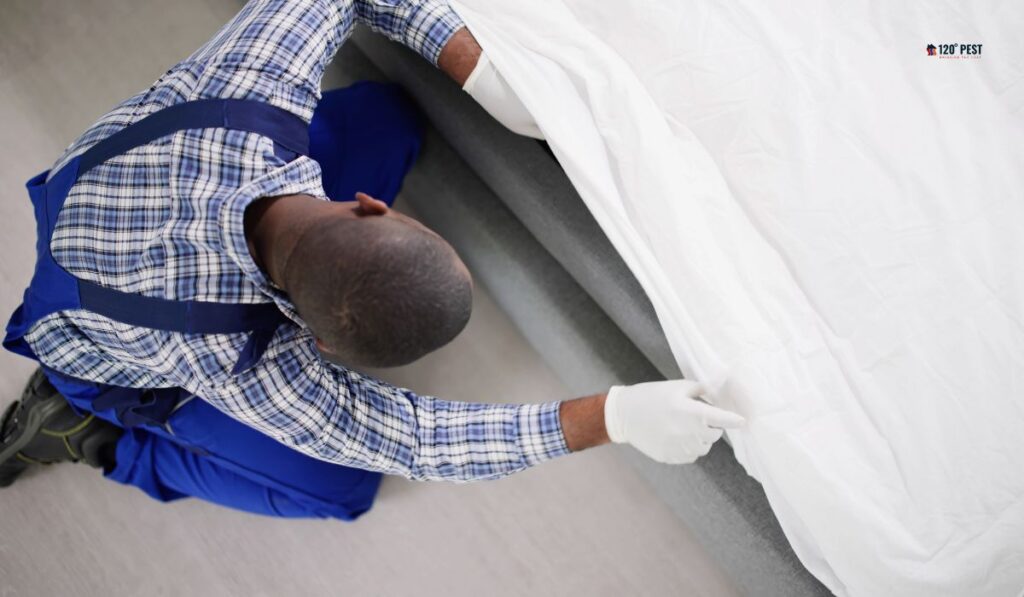Bed bugs, the nocturnal pests that haunt both our sleep and sanity, have been a persistent problem for centuries.
As traditional methods of eradication faced challenges such as resistance and environmental concerns, the spotlight has shifted to alternative solutions.
One such method gaining traction is heat treatment.
In this comprehensive guide, we delve into the intricacies of how heat treatment works for bed bugs, exploring the science behind it, the equipment utilized, and the advantages it brings to the table.
Brief Overview of Bed Bug Infestation
Bed bug infestations have become a pervasive issue globally, transcending socio-economic boundaries.
From residential homes to commercial spaces, these tiny vampires feed on human blood, leaving behind itchy welts and a sense of invasion.
Rise in Popularity of Heat Treatment
With the limitations and concerns surrounding traditional pesticide treatments, heat treatment has emerged as a viable alternative.
Its popularity stems from its efficacy in reaching hidden bed bug locations and its minimal environmental impact.
Purpose of the Article
This article aims to demystify the process of heat treatment for bed bugs.
From understanding the biology of bed bugs to the equipment used in the treatment process, we will cover every aspect comprehensively.
Understanding Bed Bugs
Biology and Behavior
Life Cycle of Bed Bugs
Bed bugs undergo a life cycle consisting of egg, nymph, and adult stages.
Understanding this cycle is crucial for effective treatment, as different stages may require varied approaches.
Feeding Habits
Bed bugs are opportunistic feeders, usually seeking blood meals during the night.
Knowledge of their feeding habits aids in identifying infestations and planning targeted treatments.
Common Signs of Bed Bug Infestation
Physical Symptoms
Victims of bed bug bites may experience red, itchy welts.
Recognizing these symptoms is essential for early detection and intervention.
Visual Indicators
Inspecting bedding, furniture seams, and other potential hiding spots can reveal the presence of bed bugs through fecal stains and shed skins.
Traditional Bed Bug Treatments
Pesticides and Chemical Solutions
Historically, pesticides were the primary weapon against bed bugs.

However, the overuse of chemical solutions led to concerns of resistance among bed bug populations.
Limitations and Challenges
Resistance Issues
Bed bugs developed resistance to many commonly used pesticides, rendering traditional methods less effective over time.
Health Concerns
Chemical treatments raised health concerns for occupants, especially in sensitive populations such as children and the elderly.
Introduction to Heat Treatment
Conceptual Framework
The Science Behind Heat Treatment
Heat treatment relies on the simple principle that bed bugs, and their eggs, cannot survive extreme temperatures.
This method targets all life stages, ensuring comprehensive eradication.
Why Heat is Effective
Unlike pesticides that may miss hidden bed bug locations, heat penetrates every nook and cranny, reaching areas often inaccessible with traditional treatments.
How Heat Treatment Works
Temperature Requirements
Optimal Temperature Range
Achieving a temperature between 120°F and 140°F is critical for success, as it ensures the lethal impact on bed bugs without causing damage to the treated space.
Impact on Different Bed Bug Stages
The varying tolerances of eggs, nymphs, and adults necessitate maintaining the desired temperature for a specific duration to guarantee their demise.
Duration of Treatment
Factors Influencing Treatment Time
The size of the infested area, insulation, and the extent of clutter can influence the time required for effective heat treatment.
Ensuring Comprehensive Treatment
Thoroughness is key. Operators must meticulously monitor and adjust equipment to prevent cold spots and guarantee uniform heat distribution.
The Equipment Used
Specialized Heating Systems
Electric Heaters
Electric heaters offer precise temperature control, making them suitable for both residential and commercial applications.
Propane Heaters
Propane heaters are portable and effective for treating large spaces, providing flexibility in addressing diverse infestation scenarios.
Monitoring Devices
Temperature Sensors
Strategically placed temperature sensors ensure that the desired heat levels are consistently maintained throughout the treatment process.
Heat Distribution Systems
Efficient heat distribution systems, such as fans, help overcome obstacles like furniture or wall partitions, ensuring even treatment.
Preparation for Heat Treatment
Pre-Treatment Checklist
Removing Clutter
Clearing the treated area of unnecessary items ensures unobstructed heat flow, maximizing the treatment’s effectiveness.
Securing Valuables
Certain items may be sensitive to high temperatures.
Properly securing and protecting valuables prevents potential damage during the heat treatment.
Safety Measures
Protective Gear for Operators
Operators must wear appropriate protective gear to shield themselves from the high temperatures involved in the treatment process.
Guidelines for Occupants
Providing clear guidelines to occupants ensures their safety and cooperation during the heat treatment process.
Conducting the Heat Treatment
Room-by-Room Approach
Ensuring Even Heat Distribution
Dividing the treatment into specific rooms allows for targeted application, ensuring that every corner receives sufficient heat.
Targeting Bed Bug Hotspots
Focusing on areas prone to infestation, such as bedding and upholstered furniture, enhances the treatment’s effectiveness.
Monitoring and Adjusting
Real-time Temperature Checks
Continuous monitoring during the treatment allows operators to make real-time adjustments, guaranteeing the desired temperature levels are maintained.
Adjustments for Efficacy
Flexibility is key.
Operators must be prepared to adjust the treatment plan based on the specific conditions encountered, ensuring optimal efficacy.
Advantages of Heat Treatment
Non-Chemical Solution
Addressing Health Concerns
The absence of chemicals alleviates concerns related to exposure, making heat treatment a safer option, especially for sensitive populations.
Environmental Impact
Reducing reliance on pesticides contributes to a more environmentally friendly approach to pest control.
Comprehensive Eradication
Targeting Hidden Infestations
The ability of heat to penetrate every crevice ensures that even hidden or hard-to-reach infestations are effectively addressed.
Breaking the Reproductive Cycle
By eliminating all life stages, heat treatment disrupts the bed bug reproductive cycle, preventing future infestations.
Limitations and Considerations
Cost Factors
Comparing Costs with Other Methods
While heat treatment may have a higher upfront cost, comparing it to the long-term expenses of repeated chemical treatments often reveals its cost-effectiveness.
Structural Impact
Understanding the compatibility of heat treatment with different materials is crucial to prevent damage to sensitive items.
Safety Concerns for Certain Items
Electronics and Heat-sensitive Items
Special precautions must be taken for electronics and heat-sensitive items to avoid damage during the treatment.
Impact on Structural Integrity
Certain materials may be sensitive to high temperatures, requiring a careful assessment of potential structural impact.
Post-Treatment Guidelines
Ensuring Bed Bug-Free Environment
Follow-up Inspections
Regular inspections post-treatment help ensure that any potential resurgence is promptly addressed.
Preventive Measures
Implementing preventive measures, such as mattress covers and proactive cleaning, reduces the risk of future infestations.
Dealing with Residual Effects
Cleaning and Residue Removal
Cleaning treated areas and removing any residual traces of the treatment contribute to restoring the space to normalcy.
Restoring Normalcy
Guidelines for occupants on resuming normal activities post-treatment ensure a smooth transition back to a bed bug-free environment.
Future Trends in Bed Bug Treatment
Research and Technological Advancements
Ongoing Studies
Highlighting current research projects sheds light on the evolving landscape of bed bug treatment.
Potential Innovations
Exploring potential technological innovations hints at the future possibilities in the realm of bed bug control.
Conclusion
In conclusion, heat treatment stands out as a promising and effective solution in the ongoing battle against bed bug infestations.
This comprehensive guide has equipped readers with valuable insights into the intricacies of addressing this persistent problem, emphasizing the non-chemical nature of heat treatment and its numerous advantages.
To take the next step in securing a bed bug-free environment for your home or business, contact 120 Pest Control.
Our experienced professionals utilize cutting-edge heat treatment methods to ensure thorough eradication.
Visit 120 Pest to schedule a consultation and embrace a safer, more sustainable approach to pest control today.
FAQs
How safe is heat treatment for bed bugs?
Heat treatment is considered a safe method when conducted by trained professionals. Protective gear is used to ensure the safety of operators, and guidelines for occupants are provided to minimize any potential risks.
Is heat treatment effective in the long term?
Yes, heat treatment is known for its long-term efficacy. By targeting all life stages of bed bugs, it disrupts their reproductive cycle, preventing future infestations. Evidence and testimonials support the reliability of heat treatment over time.
What is the optimal temperature range for heat treatment?
The optimal temperature range for effective heat treatment is between 120°F and 140°F. This ensures the lethal impact on bed bugs while avoiding damage to the treated space.
How does heat treatment compare to traditional pesticide methods?
Heat treatment offers advantages over traditional pesticide methods by reaching hidden bed bug locations and minimizing environmental impact. It is also a non-chemical solution, addressing health concerns associated with chemical treatments.
How long does a heat treatment session typically last?
The duration of a heat treatment session varies based on factors such as the size of the infested area, insulation, and clutter. Operators must maintain the desired temperature for a specific duration to guarantee the eradication of bed bugs.
What equipment is used in heat treatment?
Specialized heating systems, such as electric and propane heaters, are employed. Monitoring devices, including temperature sensors and heat distribution systems like fans, ensure even treatment. This equipment is crucial for the success of the heat treatment process.
Are there safety concerns for specific items during heat treatment?
Yes, precautions are taken for items sensitive to high temperatures, such as electronics and heat-sensitive materials. Proper assessment and protection are necessary to avoid damage during the treatment.
How does heat treatment disrupt the bed bug reproductive cycle?
Heat treatment targets all life stages of bed bugs, including eggs, nymphs, and adults. By ensuring lethal temperatures for each stage, it disrupts the reproductive cycle, preventing the resurgence of bed bug infestations.
What are the advantages of heat treatment over traditional methods?
Heat treatment is a non-chemical solution, addressing health concerns and reducing environmental impact. It comprehensively targets hidden infestations, breaks the bed bug reproductive cycle, and offers a more environmentally friendly approach to pest control.
Does heat treatment have any impact on structural integrity?
Certain materials may be sensitive to high temperatures, and a careful assessment is conducted to prevent damage. Understanding the compatibility of heat treatment with different materials is crucial to ensure the structural integrity of the treated space.





